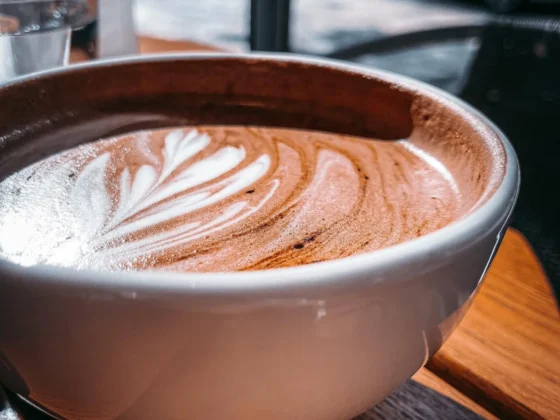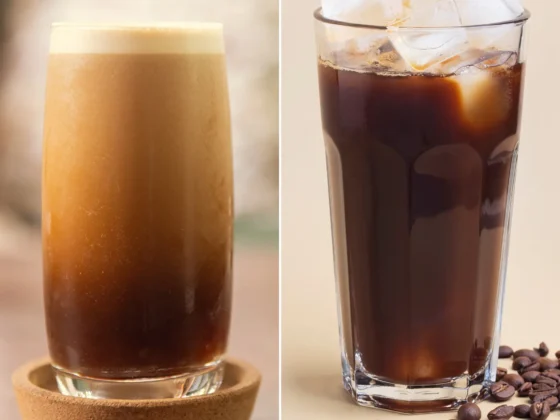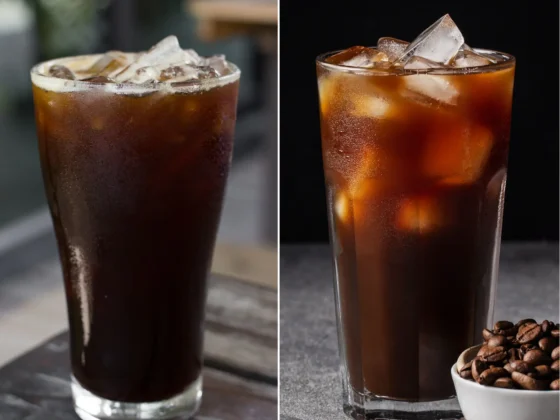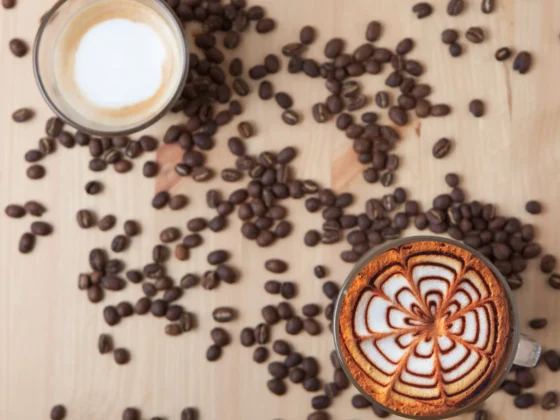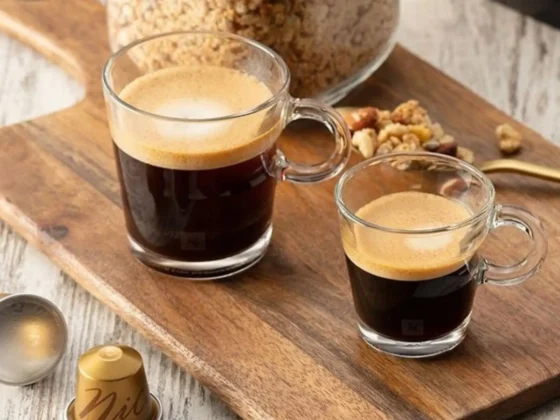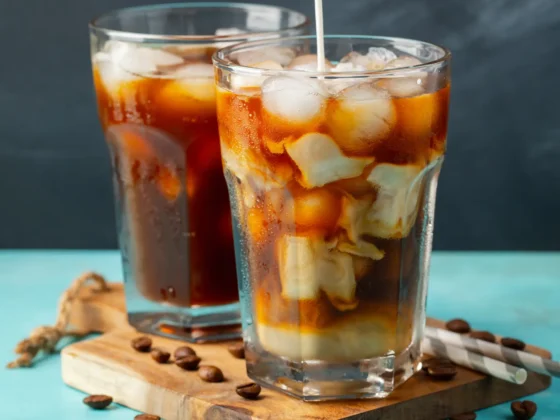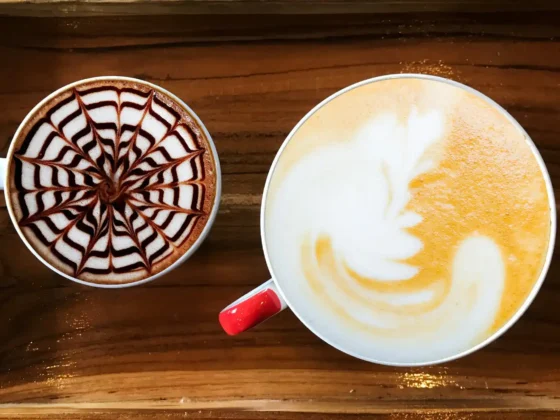Welcome to this comprehensive guide on Café de Olla, a cherished beverage that has captivated hearts across Mexico and beyond. Known as café de la olla in its traditional setting, this unique coffee drink boasts rich flavors and an even richer cultural history. Our exploration will take you through its origins, the intricacies of its preparation, and even modern adaptations available from brands like Nescafe and McCafe.
We’ll delve into why the authentic clay pot is non-negotiable for brewing this coffee and how the socio-cultural milieu of early 20th-century Mexico helped propel this delectable drink into an enduring symbol of comfort and community. Whether you’re a coffee connoisseur or someone simply curious about international coffee traditions, this article aims to unveil the very heart of this concoction, making it more than just a cup of coffee—it’s a taste of Mexican heritage.
What is Cafe de Olla? – Key Takeaway
- Cultural Reverence: This delightful concoction isn’t just a coffee; it embodies Mexican heritage, tradition, and storytelling, carrying a rich tapestry of history in each cup.
- Authentic Ingredients: The drink’s unique flavor profile hinges on carefully selected ingredients like cinnamon, piloncillo, and sometimes even chocolate, which have their own cultural significance and narrative in Mexican cuisine.
- Evolving Traditions: Beyond its traditional roots, this coffee has seen variations and modern interpretations, reflecting regional adaptations and contemporary twists by renowned chefs.
- Influence Beyond the Cup: This beloved drink has had a significant role in creating Mexican revolutionary history, owing to its central significance in Mexican communal life.
- Global Appreciation: As specialty coffee culture evolves, this concoction has found its place in the international spotlight, fusing traditional brewing techniques with modern nuances and captivating coffee enthusiasts worldwide.
The Origins of Café de Olla
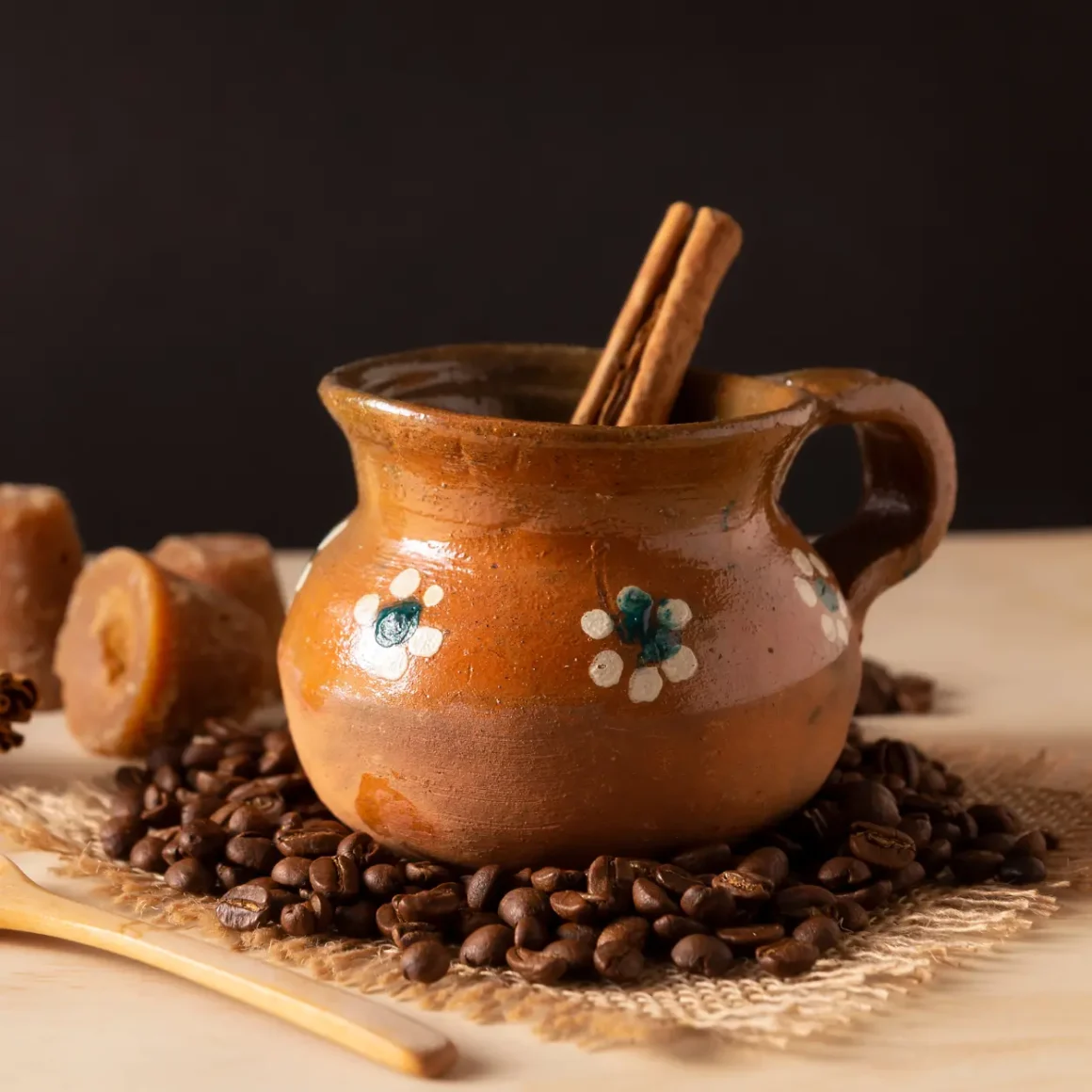
Delve into the rich tapestry of this delicacy, a storied Mexican coffee drink that has its roots in cultural history and traditional practices. Its significance goes beyond the mere joy of sipping a warm beverage; it’s a ritual, a symbol, and a part of Mexico’s unique heritage.
Ancient Beginnings: How it All Started
The story of this beverage can be traced back to the Mexican Revolution around 1910, a period of significant turmoil and change. At that time, women, known as “soldaderas,” played essential roles in supporting the military in various ways, such as:
- Cooking: Preparing meals for soldiers, often under challenging conditions.
- Cleaning: Maintaining hygiene in the camps, a vital part of troop welfare.
- Medical Support: Offering first aid and basic medical services to injured soldiers.
Among the comforts these soldaderas provided was this coffee drink, a delectable brew concocted from readily available ingredients like coffee grounds, cinnamon, chocolate, and piloncillo, a coarse unrefined sugar. The beverage was not only comforting but also easy to prepare and energy-boosting. Its initial popularity within military camps led to its eventual widespread acceptance in Mexican society.
The Importance of the Clay Pot

When asking, “What is café de olla,” one cannot overlook the crucial role played by the traditional clay pot in its preparation. The pot is more than just a cooking utensil; it’s an integral part of the coffee’s character. (1) Key points to consider are:
- Unique Flavor: The clay pot lends a distinctive taste to the brew, elevating it from a regular coffee to a special experience.
- Heat Retention: The clay pot has excellent heat retention properties, making it ideal for keeping the coffee warm for extended periods.
- Authenticity: Utilizing the clay pot underscores the tradition and cultural significance of the drink.
The earthen clay pot infuses the coffee with a singular flavor and aroma, making this delicacy a distinctive and memorable experience.
The Socio-Cultural Implications in Early Mexico
The impact of this drink transcends its status as a mere beverage. It assumed a more meaningful role in the backdrop of early Mexican society. Here are some aspects to ponder:
- Community Building: The drink was often shared among people, fostering a sense of community and solidarity, especially in rural and colder regions.
- Symbol of Support: During the revolution, the presence of of this beverage was more than just about providing a warm drink; it symbolized the care and support of soldaderas towards the fighting troops.
- Cultural Export: Its popularity led to this coffee’s dissemination not just within Mexico but also beyond its borders, including the United States, serving as a cultural ambassador of sorts.
Thus, café de la olla remains a symbol of Mexican heritage, deeply embedded in the country’s social and cultural fabric.
Where to Buy Café de Olla?
In your quest for the authentic flavors of this concoction, there are several brands that offer a convenient, yet flavorful experience. Today, we’ll be examining three different options that promise to bring this traditional Mexican coffee to your table: Nescafe Cafe De Olla 5.89 OZ, McCafe Café de Olla Keurig Single-Serve K-Cup Pods, 60 Count, and Nestle Cafe De Olla. Each comes with its unique features and benefits, so let’s delve into the details.
Nescafe Cafe De Olla

No products found.
Nescafe’s café de olla nescafé brings the traditional blend of dark roast coffee with a dash of cinnamon flavor to your kitchen, all in the convenience of an instant format.
Coffee Maker Highlights:
- Item Form: Presented in a powdered form for quick preparation.
- Flavor Profile: Distinctive notes of cinnamon.
- Roast Level: Dark roast for a more robust flavor.
- Packaging: Comes in a well-designed 5.89 oz jar.
- Source Quality: Sourced from pristine coffee-growing regions.
Why opt for this coffee maker? If you’re someone who doesn’t want to compromise on quality while also valuing speed and convenience, then Nescafe Cafe De Olla is the perfect option. Its robust dark roast is balanced by the natural sweetness of caramelized sugar and a touch of cinnamon, making it an ideal companion for breakfast or any moment in the day that calls for a special cup of coffee.
McCafe Café de Olla, Keurig Single Serve K-Cup Pods, 60 Count
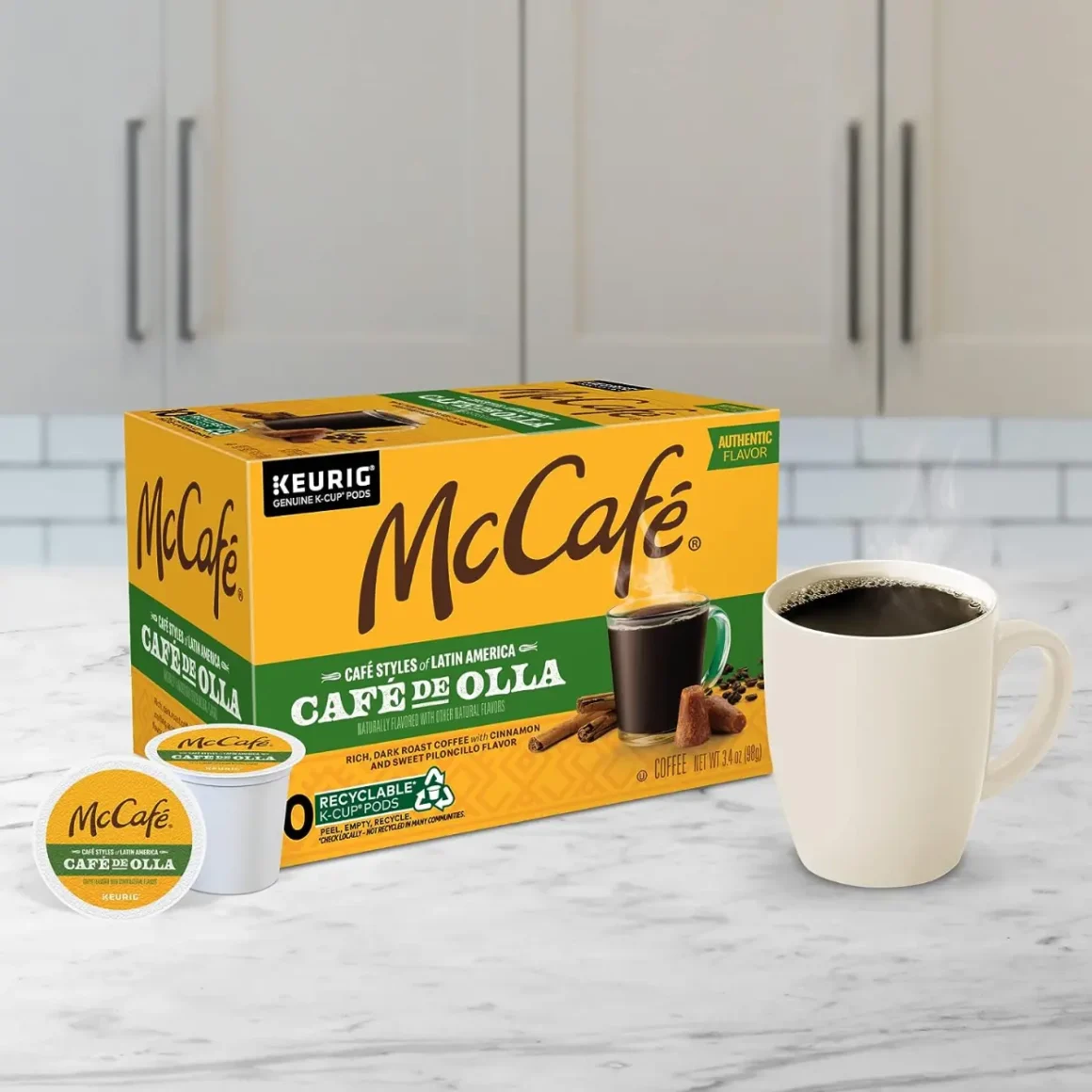
McCafe’s café de olla offering delivers a uniquely satisfying experience through its Keurig Single Serve K-Cup Pods.
- Ingredient Base: Exclusively uses Arabica coffee beans.
- Item Form: Convenient capsule format.
- Flavor Complexity: Influenced by the cultural richness of the region, presenting a unique flavor.
- Roast Degree: Dark roast, synonymous with depth and body.
- Sustainability: 100% responsibly sourced to better farming communities and the planet.
- Compatibility: Compatible with all Keurig single-serve coffee makers.
- Recyclability: K-cup pods are recyclable, aligning with eco-conscious values.
For the coffee aficionados who appreciate the simplicity of a one-touch brew without sacrificing flavor, McCafe’s café de olla k-cup is the answer. The product is inspired by the rich cultural facets of its origin and promises a journey in every cup. Moreover, it comes with the assurance of being responsibly sourced, making it not just a treat for your taste buds but also a nod to ethical sourcing and sustainability.
The Authentic Recipe: Brewing the Perfect Cup

Creating the perfect cup of this concoction is a journey through the rich tapestry of Mexican culture, blending unique flavors with traditional cooking methods. Whether you’re a coffee enthusiast or a culinary adventurer, this guide will walk you through each step, ensuring you capture the essence of this beloved beverage.
Essential Ingredients and Their Cultural Significance
When it comes to brewing an authentic cup of this beverage, the ingredients used are not just about taste; they’re steeped in cultural history.
- Purified Water: The basic building block, crucial for achieving the right balance in your brew.
- Coffee: Mexican coffee, specifically Volcanica Mexican coffee, is the preferred choice. Its full-bodied flavor brings authenticity and robust character to the café de olla recipe.
- Cinnamon Sticks: A traditional spice in Mexican cuisine, cinnamon adds a layer of complexity and aroma.
- Star Anise: Known for its medicinal properties, this ingredient brings a hint of licorice flavor.
- Cloves: Another spice rich in antioxidants, cloves add depth and a slight sweetness. (2)
- Piloncillo or Dark Brown Sugar: This unrefined cane sugar is deeply embedded in Mexican cooking, lending a unique sweetness. (3)
- Semi-Sweet Cocoa Squares (Optional): A nod to Mexico’s history as the birthplace of chocolate, this addition turns the drink into a richer experience.
The careful selection and amalgamation of these ingredients do more than just tantalize your taste buds; they also take you on a cultural journey through the diverse flavors of Mexico.
Step-by-Step Preparation Method
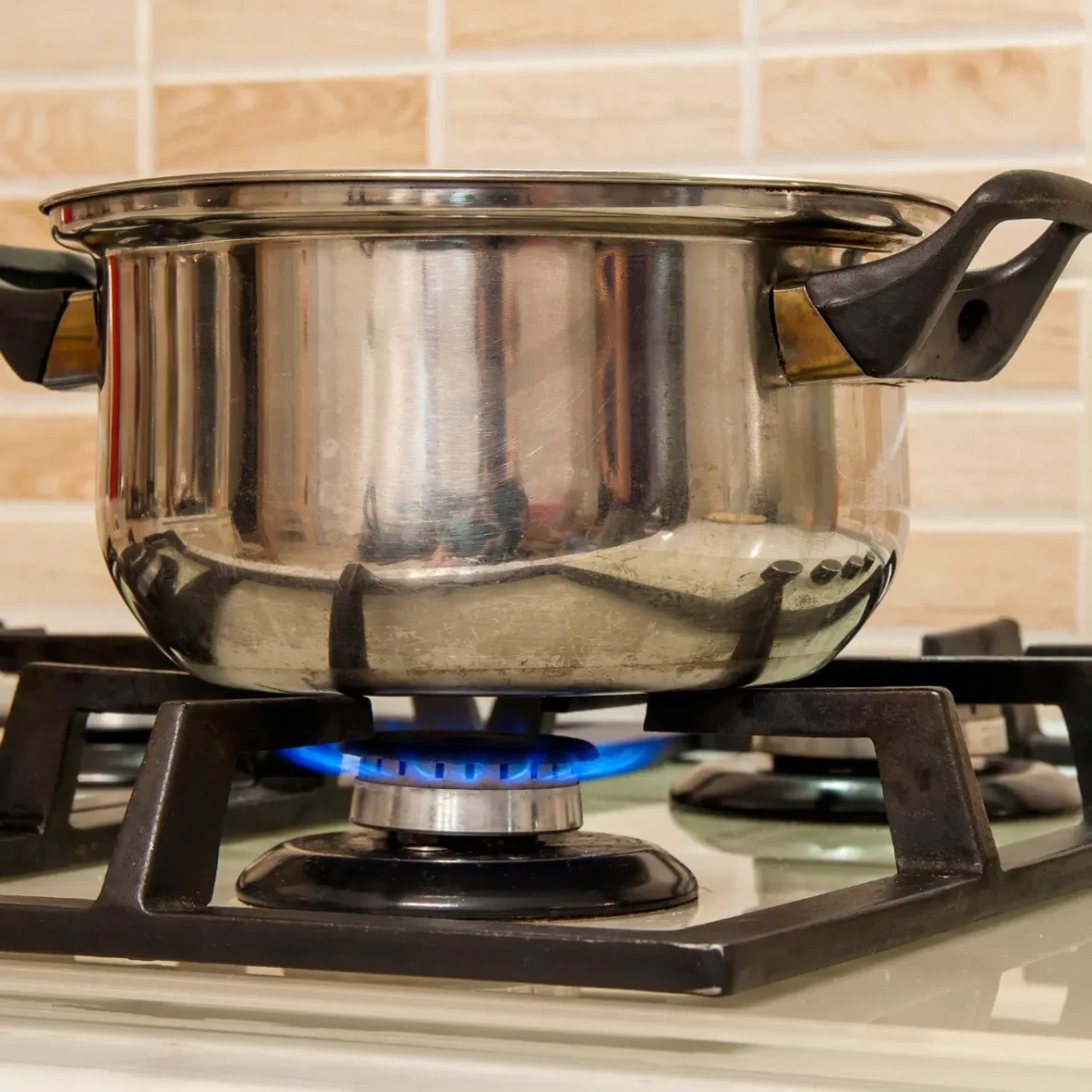
Making this coffee drink might seem simple, but like any recipe, the devil is in the details. Here’s how to make cafe de olla:
- Step 1: Start by adding water, cinnamon sticks, star anise, cloves, and piloncillo (or dark brown sugar) to a large stovetop pot. Optionally, include cocoa squares for added richness.
- Step 2: Bring the mixture to a boiling point, ensuring that all the ingredients are fully dissolved.
- Step 3: Turn off the heat and carefully skim any foam that may have formed at the top.
- Step 4: Incorporate the coffee grounds into the pot, allowing them to infuse for 5 minutes with the heat off.
- Step 5: Strain your brew through a fine mesh sieve or muslin cloth, or use a French press to separate the grounds and spices.
- Step 6: Serve hot and enjoy your creation.
Remember, it’s the fine balance of these steps that perfects your recipe.
Common Mistakes and How to Avoid Them
When preparing this drink, there are some pitfalls you’ll want to avoid:
- Wrong Water-to-Coffee Ratio: Too much water or too little coffee can dilute the robustness of your brew. Stick to the recommended 9 cups of water and 9 tablespoons of coffee.
- Skipping the Boiling Step: Bringing the water to a boil ensures all the spices and sugar are dissolved, maximizing flavor.
- Ignoring the Infusion Time: Leaving the coffee to infuse for less than 5 minutes might result in a weak brew, while over-infusion could make it bitter.
- Not Straining Properly: Poor straining can leave residual grounds in your coffee. Always use a fine mesh sieve, muslin cloth, or French press.
By sidestepping these common errors, you can ensure that your drink is as close to traditional Mexican perfection as possible.
Variations: Regional and Modern Twists
The beauty of this delicacy lies in its versatility. While there’s a classic recipe deeply rooted in Mexican culture, this beloved coffee drink has also seen a multitude of adaptations. From regional tweaks using local ingredients to modern interpretations by culinary geniuses, this beverage continues to evolve while maintaining its core essence.
Adapting to Local Ingredients: Regional Variations
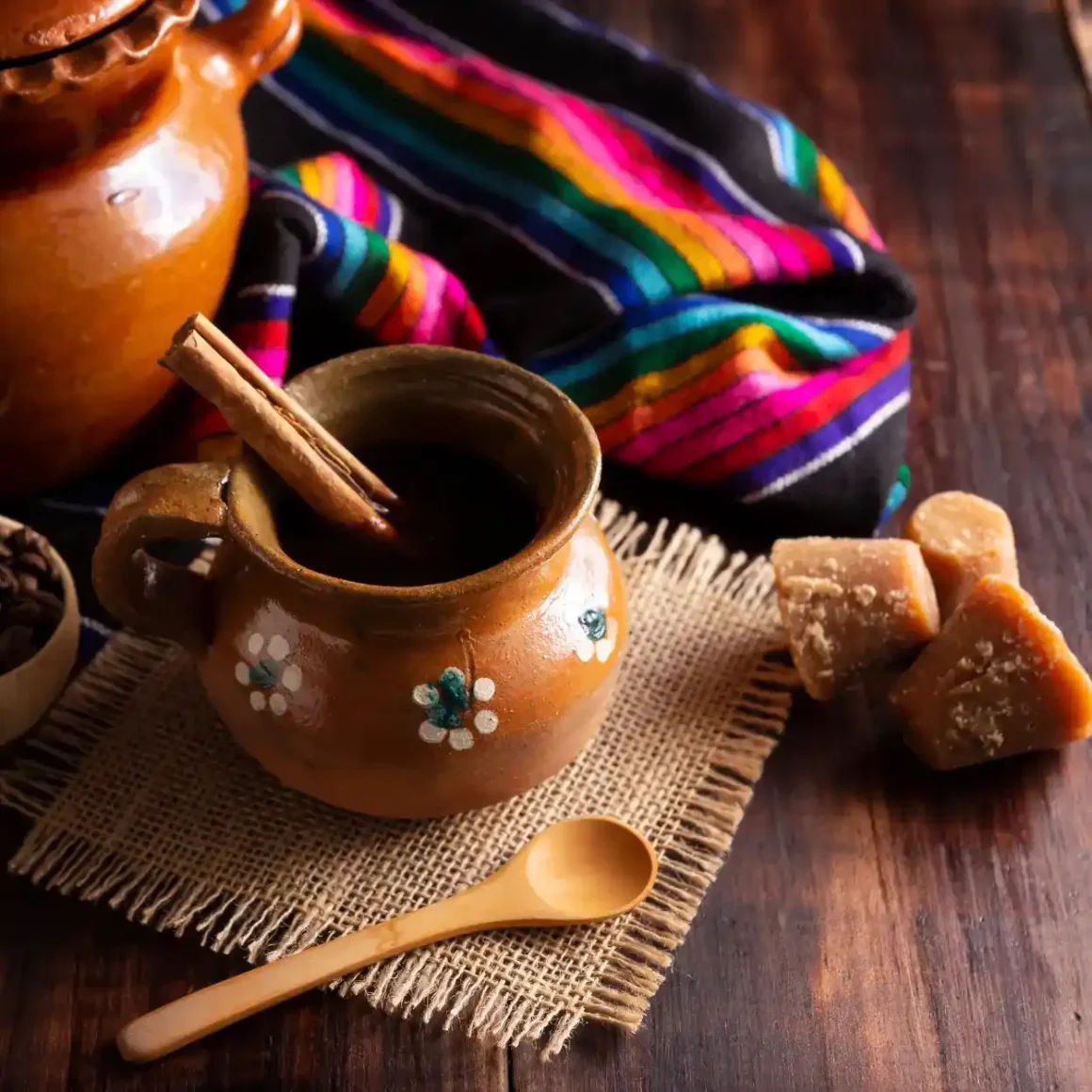
The cup of joe you sip in Veracruz may not taste exactly like the one you’d find in Mexico City, thanks to regional variations that give this traditional drink a unique twist.
- Agave Syrup: In areas where piloncillo is not readily available, agave syrup serves as an excellent substitute.
- Local Coffee: Different states in Mexico have their own coffee-growing regions, each bringing a specific flavor profile to the brew.
- Spices: Some regions prefer using allspice or nutmeg in addition to, or instead of, the traditional cinnamon and star anise.
- Fruits: In certain areas, a slice of orange or a few berries are added during the boiling process to introduce a fruity undertone.
Each locality imparts its own signature, yet the heart and soul of this delectable beverage remain unchanged across these regional interpretations.
Modern Interpretations by Renowned Chefs
Culinary innovators have not hesitated to put their own spin on this classic, either.
- Cold Brew: Some chefs have experimented with turning this drink into a cold brew variant, perfect for hot summer days.
- Gourmet Spices: High-end spices like saffron or vanilla beans have been used to elevate the drink to a gourmet level.
- Nut Milk: To cater to a more health-conscious or vegan crowd, alternatives like almond or oat milk have been used in place of traditional water.
While purists may argue that these versions stray from the original, these modern adaptations showcase the flexibility and global appeal of this delicacy.
Pairing your Café de Olla: What Goes Best?
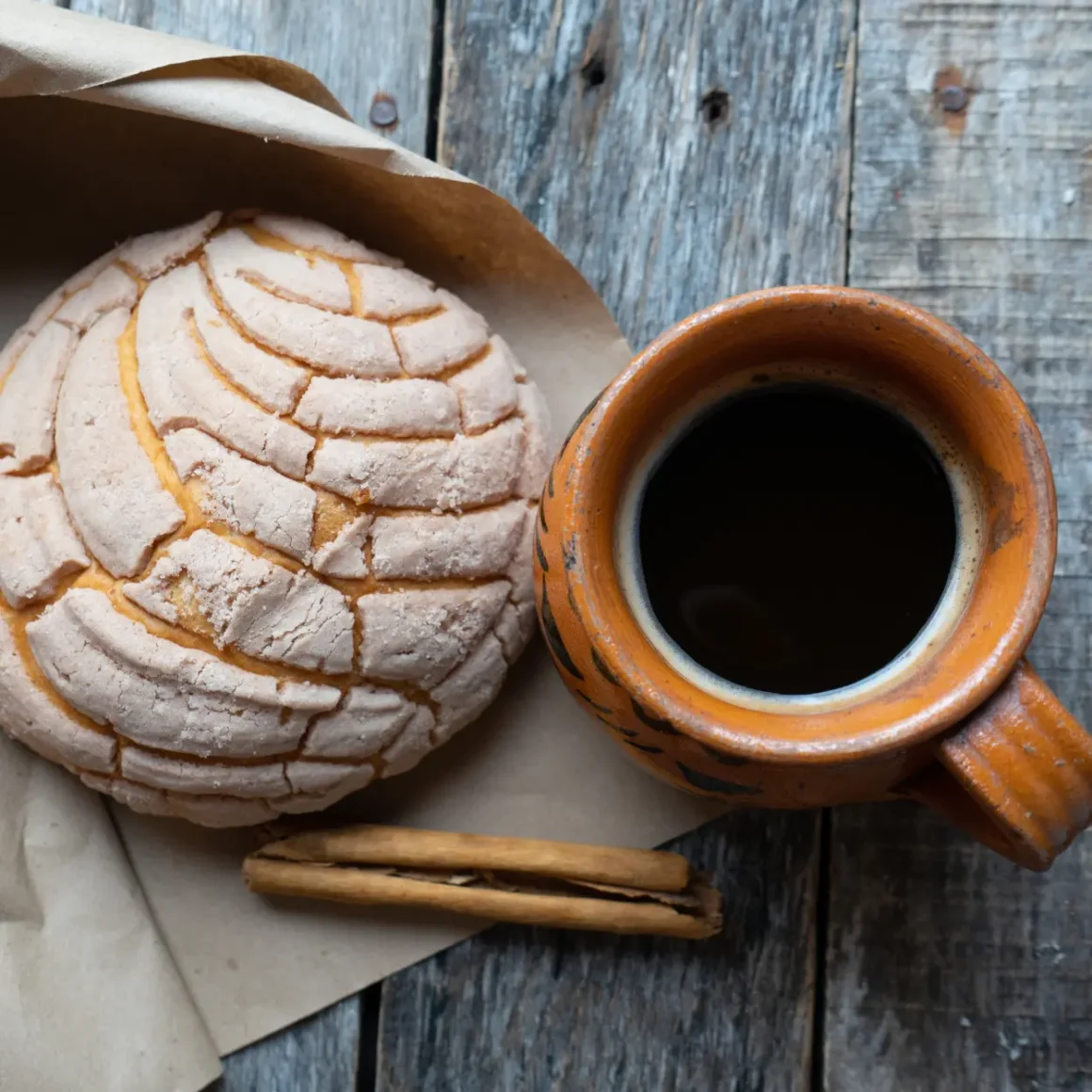
Just like any culinary masterpiece, this beverage can be further enhanced when paired thoughtfully.
- Pan Dulce: This Mexican sweet bread is perhaps the most classic pairing, creating a balance of flavors and textures.
- Churros: The sugary, cinnamon flavor of churros complements the rich, spiced coffee beautifully.
- Fresh Fruit: For a lighter option, fruits like mango or pineapple offer a refreshing contrast.
- Cheese: Believe it or not, a slice of mild, creamy cheese can cut through the sweetness and provide an unexpected yet pleasant contrast.
Selecting the right pairing not only amplifies your experience but also gives you a broader taste of the cultural richness that this delicacy represents.
Café de Olla and Today’s Coffee Culture
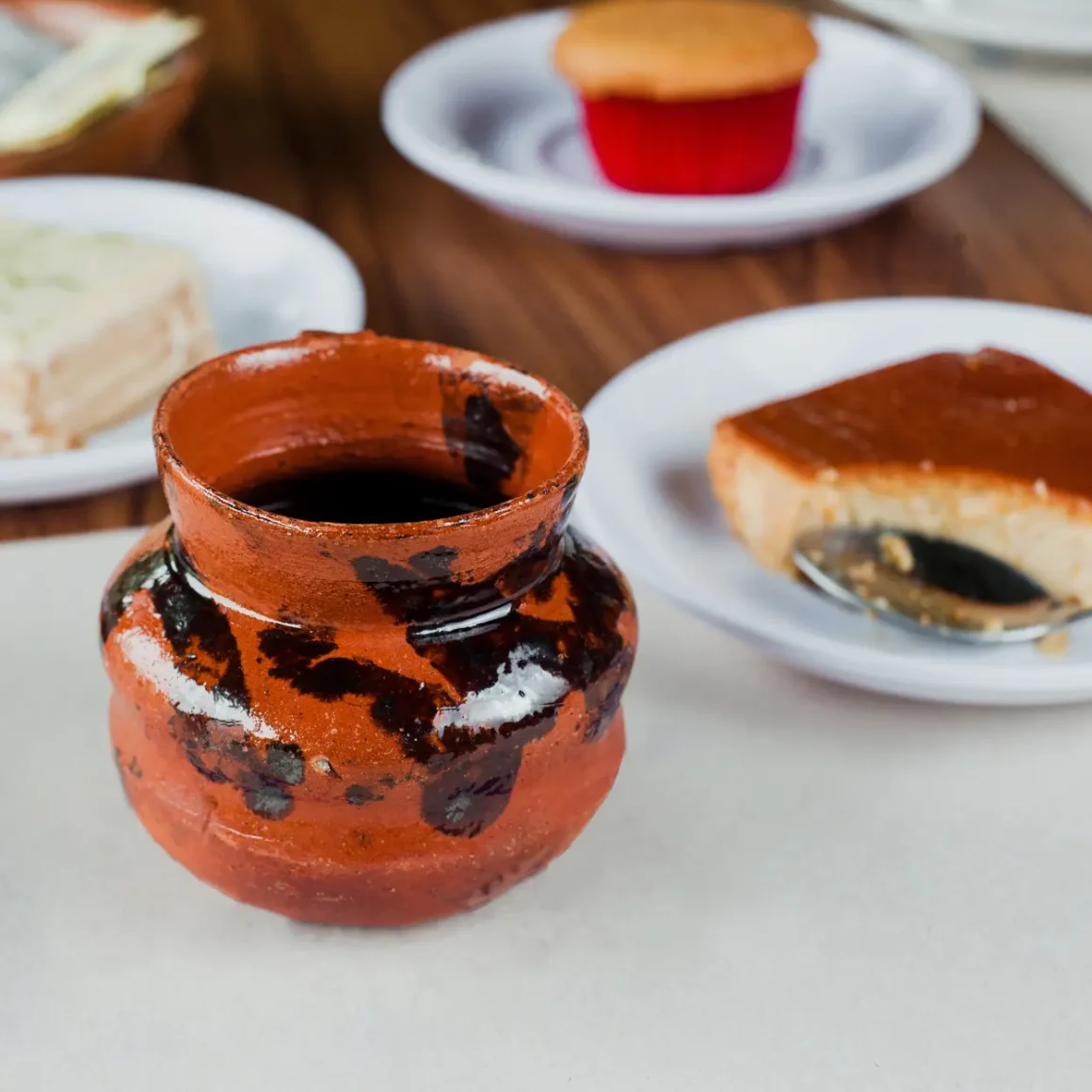
In today’s ever-evolving coffee culture, where third-wave cafes and experimental brews reign supreme, this concoction holds its own as both a comfort drink and a subject of fascination. This traditional Mexican beverage intersects with contemporary trends in intriguing ways, from specialty coffee to the innovative brewing methods often employed in modern cafes. Let’s delve into how this rich, spiced coffee has carved its niche in the current coffee landscape.
Its Role in the Specialty Coffee World
The explosion of specialty coffee has offered this lovely coffee drink a platform where it’s not just another coffee but rather an experience to be savored and dissected.
- Single-Origin Beans: Cafés specializing in single-origin brews sometimes offer this drink made with premium, location-specific beans, raising the drink’s profile.
- Tasting Notes: Given the depth of flavors involved, the café often provides detailed tasting notes to enrich the consumer’s experience.
- Brewing Techniques: From siphon to Chemex, some baristas are experimenting with different brewing techniques to extract nuanced flavors from this traditionally simple brew.
Through these practices, This beverage is gaining not just a consumer base but a connoisseur following that appreciates the complex layers of its taste.
The Fusion of Tradition and Modern Coffee Techniques
While the roots of this delicacy are steeped in tradition, its essence can be elevated by combining ancestral recipes with modern coffee-making methods.
- Precision Brewing: The use of precise scales, grinders, and temperature-controlled water can bring out a more balanced flavor profile.
- Cold Brew Café de Olla: A fusion that combines the cold brewing process with the traditional spices and sweeteners of this drink.
- Cafè de olla Espresso Martini: An “Espresso Martini crafted with a clear sense of purpose and intention.” The fusion of Oaxacan rum harmonizes with coffee liqueur, chilled-brewed coffee, and “olla syrup,” a handcrafted cinnamon-orange sweetener paying homage to Mexico’s iconic coffee tradition.
These modern adaptations showcase how this delightful concoction can retain its cultural essence while embracing new brewing frontiers.
Spreading the Love: Global Appreciation of Café de Olla
It’s no longer just a Mexican treasure; this delicious coffee is capturing hearts and palates worldwide.
- International Cafés: From London to Tokyo, you can now find this Mexican classic on the menu in coffee shops around the globe.
- Social Media: Instagram and Pinterest are flooded with Café de Olla recipes, attracting a younger, tech-savvy audience.
- Culinary Tourism: As part of cultural immersion, tourists often seek out authentic experiences of this delightful coffee drink, further contributing to its global popularity.
The worldwide acclaim of this beverage attests to its universal appeal and its ability to connect people across cultures through a single cup of extraordinary coffee.
The Revolutionary Origins of Café de Olla
The saga of Café de Olla is deeply rooted in Mexico’s revolutionary history. As the country found itself amidst the tumultuous waves of the Mexican Revolution in 1910, there were silent heroes who offered relentless support. The Adelitas, known for their unwavering backing to the soldiers, played pivotal roles from setting up camps to ensuring the soldiers were well-fed. It was during these times that the unique blend of Café de Olla was born.
Composition
Café de Olla wasn’t just any coffee. Crafted within the rustic confines of a clay pot, the blend was a rich amalgamation of:
- Coffee and chocolate for the much-needed caffeine kick
- Cinnamon and cloves adding a hint of aromatic spice
- Piloncillo, a raw form of pure cane sugar, for sweetness
These ingredients together ensured the soldiers had an invigorating drink to sustain them through their taxing days. This wasn’t just a brew; it was an elixir of energy and spirit.
Emiliano Zapata’s Affection
The coffee blend wasn’t merely a source of energy but also held sentimental value. The renowned Emiliano Zapata, a stalwart of the Mexican Revolution, was particularly fond of this beverage. His admiration for Café de Olla was so profound that it resonated in the naming of the Zapatistas in Chiapas. This region, now celebrated for its “cafetaleras” or coffee production, paints a vivid picture of the intertwined history of coffee and revolution.
Legacy of Resistance in Chiapas
Chiapas is more than just coffee. The heartbeats of its indigenous communities, their continual quest for autonomy, and the emblematic 1994 uprising are testaments to a resilient spirit. Today, the Zapatista movement continues its pursuit of economic stability and self-governance within Mexico, embodying the ideals of resistance and preservation of age-old traditions.
Beyond Borders
While the origins of Café de Olla trace back to the Mexican soil, its charm has transcended boundaries. An evident testament to this is “Primera Taza,” a beacon of Mexican coffee culture located in Boyle Heights, Los Angeles. Operated by proud Mexican Americans, this establishment is a tribute to the ever-evolving journey of Café de Olla, showcasing its timeless appeal to a diverse audience.
Conclusion
In conclusion, this beverage is much more than a simple coffee recipe; it’s a symphony of flavors, traditions, and cultural significance. From the carefully chosen ingredients that carry their own histories to the timeless methods of preparation, this iconic brew is deeply rooted in Mexican heritage. We’ve explored not only the technical aspects of creating the perfect cup but also the variations that make each sip of this delectable beverage uniquely delightful. Adaptations have been made by renowned chefs, and regional influences have left their mark, adding new layers to this already rich concoction.
In today’s coffee culture, Café de la Olla stands as a testament to the enduring allure of specialty coffees, and its growing global appreciation reflects its universal appeal. The drink even transcends the culinary sphere, embedding itself in literature, art, and film as a symbol of communal life and cultural richness. Ultimately, this coffee drink serves as a delicious bridge between past and present, tradition and innovation, proving that a cup of coffee can indeed tell a story—a story that resonates from the heart of Mexico to coffee cups around the world.
FAQ
How does the clay pot affect the flavor of Café de Olla?
The clay pot imparts an earthy depth to the coffee, enriching its complex flavor nuances, which include spices and optional ingredients like chocolate.
What are the traditional spices used in Café de Olla and why?
Cinnamon and piloncillo are traditional spices, used to add warmth and sweetness, respectively, complementing the robustness of the dark-roasted coffee.
Can you prepare Café de Olla without a clay pot?
Yes, you can use a regular stovetop pot, though the unique earthy flavor imparted by the clay pot will be missing.
How has Café de Olla influenced modern coffee brewing techniques?
This beverage has found a place in specialty coffee culture, inspiring a fusion of traditional and modern brewing techniques, as well as new variations of the classic recipe.









